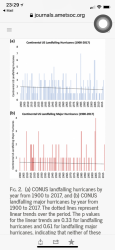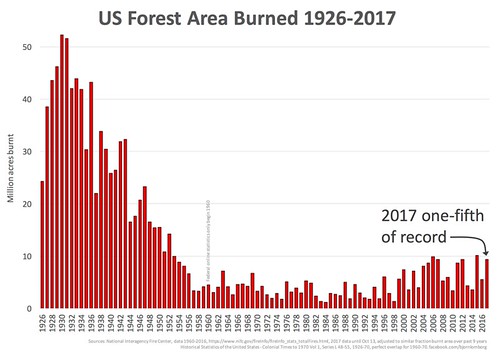There's an interesting back story to the whole thing that I did a little homework on. It bears less on the forest area than on the fire-fighting regime in the early 20th century and the type of forest that that evolved as an unintended consequence of that.
I could bore you with stuffy original literature but I won't.
In summary, after massive wildfires in the W US in the early part of the 20th C, a very aggressive fire suppression program was instituted from the early 1930s. Many fire lookout towers were built and the 'smoke-jumper' firefighters were deployed to attack fires quickly near their ignition point (mostly lighting-initiated). 'Catch 'em quick and get 'em out' type-stuff. ( I hate to think what the reaction would be if we wanted firefighters to parachute into bushfires today...

).
That morphed into the iconic 'Smokey Bear' fire-prevention advertising campaign that (mistakenly) implied that human activities were the cause of most W US (ie. regions with a marked dry season) 'intense' forest fires (it was in fact lightning by a factor of about 10-20:1). But that became an article of faith. Fires were rapidly pounced upon and extinguished.
Hence the rapid decline in the area burned c. 1930-1950 to an essentially 'minimum state'.
Meanwhile, the forests that had evolved to 'climax' maturity as large-bole trees under periodic
intensely hot burns over a
very long time now started to become dense thickets of far less mature trees (selective logging also probably had had an influence on that). Effectively a whole new biome of 'pre-climax' vegetation developed as the perceived 'norm'.
We have seen something very similar in SW WA forests with the burning/logging/insect outbreaks over the 20th century.
What evolved was a new fire susceptibility and expression regime.
So, the bottom line is that we are not comparing like-with-like forest-cough-fire ecosystems over the 20th century - irrespective of any spatial changes in forest extent or not.
In other words, in the context of how this discussion started, the old forest burn information (ie. pre mid-1950s on the bar plot) has no comparative relevance to the current situation - or, by extension, contextual relevance to any implied or invoked 'climate change' arguments - because the forest structure, fire-behaviour and fire-fighting regime is vastly different between two quite distinct eras.
Aaahhh - the delights of trying to get long-term data that are relevant, useful - and, err, dare I say,... analysable... Just look'n unfortunately ain't analysis...



.



















